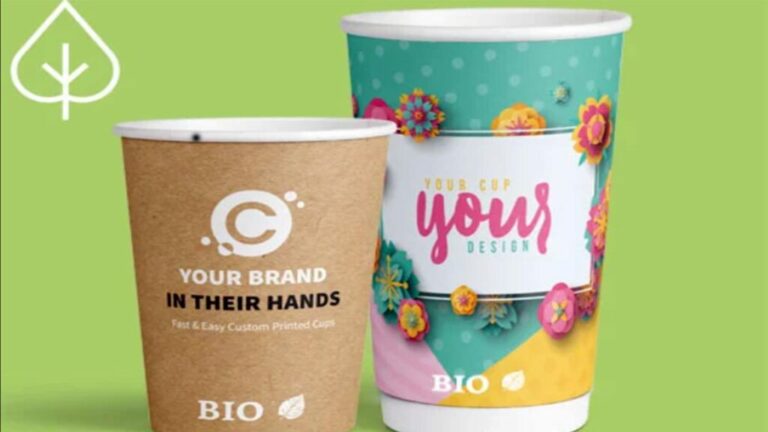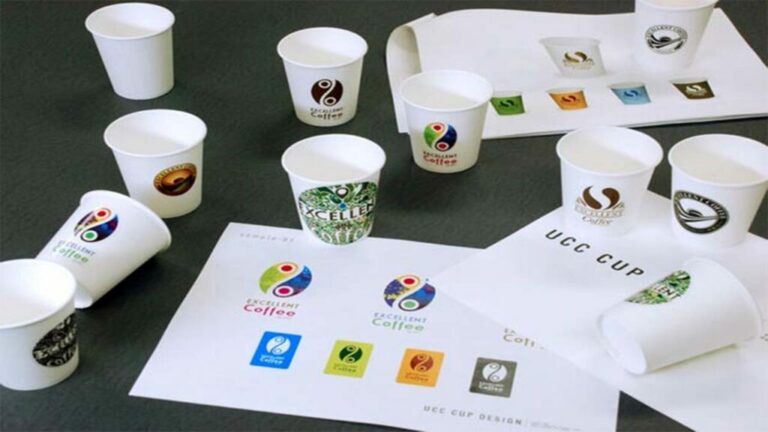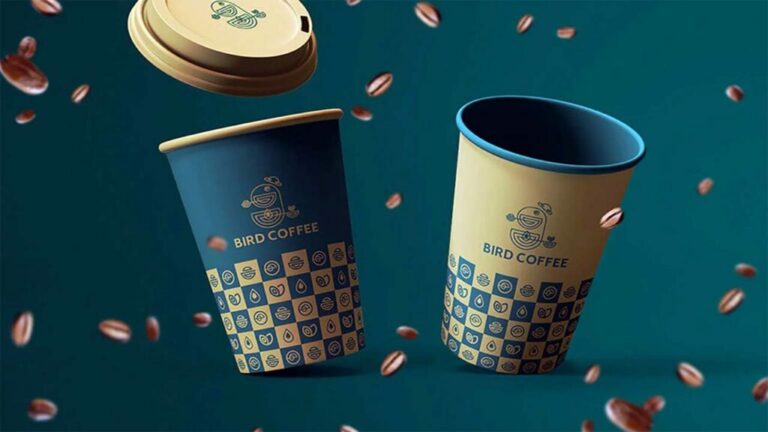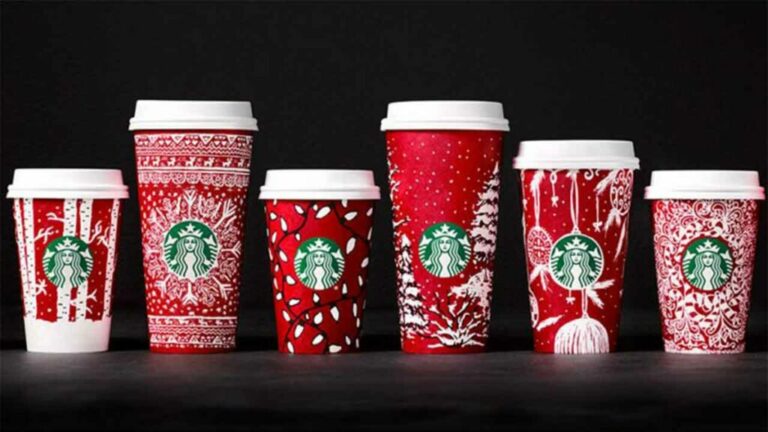The Psychology of Paper Cup Advertising
The power of Paper cup advertising, where messages compete for our attention at every turn, understanding the details of consumer psychology becomes paramount. One exciting avenue that has gained significant attention is paper cup advertising – an innovative approach that combines visual appeal, psychology, and brand messaging to captivate consumers. We will discover the psychology behind paper cup advertising, exploring how it influences consumer behaviour, fosters brand recognition, and drives engagement.
The Visual Connection
Visual communication is a cornerstone of effective advertising. Paper cup advertising taps into this primal aspect of human perception by utilising vibrant colours and striking imagery. The mere act of holding a visually appealing paper cup can engage our senses and leave a lasting impression. Colours, known to evoke emotions and associations, play a pivotal role. A warm, inviting hue may encourage positive feelings, while a bold colour choice can convey energy and excitement.
- Cornerstone of Effective Advertising: Visual communication is a foundational element in successful advertising strategies.
- Utilising Vibrant Colours: Vibrant and captivating colours are harnessed to elicit emotions and associations in viewers.
Emotional Role of Colors: Colours are known to evoke specific feelings; warm and inviting hues can encourage positivity, while bold choices convey energy and excitement.
- Imagery’s Immense Power: The imagery chosen for paper cup designs holds tremendous influence over viewer perceptions.
- Evoking Emotions through Imagery: Images of serene landscapes can evoke feelings of calmness and tranquillity.
- Triggering Joy and Belonging: Imagery depicting people celebrating can trigger emotions of joy, camaraderie, and belonging.
- A Captivating Visual Connection: The visual elements of paper cup advertising are designed not only to grab attention but also to engrain the essence of the brand in the consumer’s memory.
- Creating Lasting Impressions: The act of holding a visually appealing paper cup can create a lasting impression that stays with the consumer.
- Essence in Consumer Memory: Through well-chosen visuals, the brand’s identity becomes etched in the consumer’s memory, influencing future perceptions and choices.
Emotional Triggers
Emotion and advertising are inseparable companions. Paper cup advertising harnesses the emotional appeal by crafting messages that resonate with the viewer’s feelings. By addressing core human emotions like happiness, nostalgia, or even a sense of adventure, brands create an emotional bond that lingers long after the cup is discarded.
- Inseparable Bond: Emotion and advertising are intrinsically connected, creating powerful connections between brands and consumers.
- Emotional Appeal of Paper Cup Advertising: Paper cup advertising leverages emotional engagement by crafting messages that deeply resonate with viewers.
- Addressing Core Emotions: Brands tap into fundamental human emotions such as happiness, nostalgia, and a sense of adventure.
- Creating Lasting Bonds: The emotional connection established through paper cup advertising extends beyond the initial interaction, leaving a lasting impact.
- Happiness and Joy: By evoking feelings of happiness, brands create a positive association with their products or services.
- Triggering Nostalgia: Nostalgic imagery taps into viewers’ personal memories and emotions, fostering a sense of connection
- Inspiring Adventure: Depicting adventure or excitement in paper cup designs generates enthusiasm and curiosity among consumers.
- Nurturing Loyalty: Consider a paper cup portraying a family sharing a meal – it resonates with emotions of togetherness and love.
- Emotional Brand Loyalty: Associating positive emotions with a brand through paper cup advertising cultivates loyalty and a sense of connection.
- Lasting Impact: The emotional bond created through paper cup advertising remains long after the cup is discarded, influencing future choices.
Intellectual Associations
Paper cup advertising doesn’t merely aim for emotional engagement; it also aims to establish cognitive associations. Symbols, icons, and even subtle imagery can trigger mental connections that consumers carry into their decision-making process. A cup adorned with a symbol of eco-friendliness communicates a commitment to sustainability without explicitly stating it.
Hidden messaging, a powerful tool in psychology, can also be subtly integrated into paper cup designs. These delicate messages slightly influence consumers’ thoughts and perceptions, planting the seeds for future actions.
Brand Identity and Recognition
The consistent representation of a brand’s identity is crucial for establishing a strong presence. Paper cup advertising becomes a canvas for reinforcing brand attributes. The logo, typography, and colours used on the cup create a unified brand identity that consumers come to recognize.
Repetition is a key principle here. Seeing the same brand elements across various paper cups strengthens brand recognition. Each interaction with the cup reinforces the memory of the brand, contributing to increased recall when consumers make purchasing decisions.
Influence of Social Norms
Humans are inherently social creatures who often look to others for cues on how to behave. This psychological phenomenon, known as social proof, plays a pivotal role in advertising, including paper cup advertising. A cup that showcases people engaging with the product or service signals its popularity and creates a sense of belonging. If others are enjoying it, the consumer feels more confident about their choice.
Additionally, paper cup advertising can foster a sense of inclusivity. By depicting diverse groups of people enjoying the product, brands communicate that their offering is for everyone, regardless of background or preferences.
Call to Action Strategies
A well-designed paper cup not only captures attention but also guides consumers toward a desired action.
- Guiding Consumer Action: Well-designed paper cups serve as more than attention-grabbers; they direct consumers toward specific actions.
- Role of Effective CTAs: Call to action (CTA) strategies play a pivotal role in influencing consumer behaviour through paper cup advertising.
- Encouraging Engagement: Compelling CTAs on paper cups encourage consumers to engage with the brand in meaningful ways.
- Varied Call to Actions: CTAs can encompass a range of actions, including visiting a website, entering a contest, or following on social media.
- Crafting Compelling Messages: Effective CTAs are crafted to resonate with the viewer, offering value or benefit.
- Beyond Promotion: CTAs need not solely focus on promotional messages; they can also centre around user engagement and interaction.
- Transforming Consumers into Advocates: A paper cup inviting consumers to share their cup experiences on social media, along with a branded hashtag, transforms consumers into enthusiastic brand advocates.
- Building an Online Community: Social media-focused CTAs build an online community of consumers sharing their experiences and connecting with the brand.
- Enhancing Brand Visibility: User-generated content resulting from CTAs extends the brand’s visibility beyond the initial cup interaction.
- Creating Personal Connections: Social media-based CTAs foster a sense of personal connection between consumers and the brand.
Environmental Consciousness
In an era where eco-consciousness is on the rise, paper cup advertising can leverage this trend to appeal to consumer values. A cup adorned with eco-friendly messaging aligns with consumers who prioritise sustainable choices. Highlighting the cup’s recyclability or the brand’s commitment to reducing its carbon footprint can leave a positive impression.
This strategy goes beyond immediate sales; it cultivates a loyal customer base that appreciates the brand’s alignment with their values.
Psychology of Nostalgia
Nostalgia has a remarkable impact on human emotions.
- Harnessing Nostalgic Feelings: Paper cup designs that evoke nostalgic sensations tap into the viewer’s personal recollections and life experiences.
- Power of Bygone Eras: Imagery meaningful of a past era or a design that harks back to childhood can evoke strong emotional connections.
- Creating Emotional Bonds: Nostalgia-driven paper cup advertising forms an emotional bond between the consumer and the brand.
- Enhancing Consumer Engagement: Nostalgic imagery captures attention and elicits powerful emotions, thereby increasing consumer engagement.
- Fuelling Brand Loyalty: Successful activation of positive nostalgic emotions fosters a profound sense of loyalty towards the brand.
- Cultivating Long-Term Relationships: Nostalgia-driven paper cup advertising nurtures enduring relationships between the brand and its consumers.
- Lasting Positive Associations: The brand becomes associated with cherished moments, anchoring positive feelings in consumers’ minds.
Cultural Relevance
Cultural relevance is a crucial consideration in advertising, and paper cup advertising is no exception. Adapting designs to local cultures and traditions enables brands to connect more deeply with their target audience. Celebrating festivals, incorporating local art, or featuring culturally significant symbols on paper cups can enhance brand-consumer rapport.
Successful culturally relevant campaigns demonstrate that the brand understands and respects the cultural nuances of its audience.
Consumer Behavior Insights
Understanding consumer decision-making processes is at the heart of effective paper cup advertising. By comprehending how consumers evaluate choices, brands can tailor their messages to align with consumer preferences. Limited-time offers and special deals, strategically communicated through paper cup designs, tap into the psychology of urgency and value.
Tracking consumer responses and analysing sales data provide valuable insights into the effectiveness of various strategies.
Measuring Advertising Impact
The success of paper cup advertising can be measured through various methods.
- Consumer Response Evaluation: Monitoring consumer responses provides insights into how well the advertising resonates with the target audience.
- Engagement Metrics Analysis: Examining engagement metrics like social media interactions and website visits gauges the level of consumer interest.
- Sales Data Insights: Analysing sales data in correlation with advertising efforts unveils the impact of specific designs and messages.
- Website Visits Tracking: Monitoring the number of website visits resulting from paper cup campaigns reveals the campaign’s online influence.
- Social Media Interaction Assessment: The frequency and depth of social media interactions showcase the extent of consumer engagement.
- Offer Redemption Rates: Tracking the redemption rates for offers promoted on the cups indicates consumer interest and conversion.
- Holistic Effectiveness Picture: Combining various metrics offers a comprehensive understanding of how well the campaign resonates with consumers.
- Measuring Return on Investment (ROI): ROI assessment involves comparing the costs of the campaign to the increased sales or engagement attributed to the advertising efforts.
- Determining Cost-Efficiency: ROI analysis helps brands gauge the cost-effectiveness of their paper cup advertising campaigns.
Return on investment (ROI) can be assessed by comparing the costs of the campaign against the increase in sales or engagement attributed to the advertising efforts.
Conclusion
Finally, we are travelling in the dynamic world, where attention spans are fleeting, paper cup advertising emerges as a unique and engaging strategy. By understanding the psychology behind consumer behaviour, brands can craft paper cup designs that resonate on emotional, cognitive, and cultural levels. From evoking emotions to creating cognitive associations and leveraging social norms, paper cup advertising offers a canvas for brands to connect with their audience in profound ways. As brands continue to explore innovative avenues for effective communication, the psychology of paper cup advertising remains a fascinating realm where art and science converge to captivate and engage consumers.





